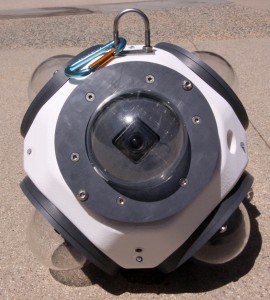Vaquita marina (Phocoena sinus) is the most endangered marine mammal in the world. Vaquita is a small porpoise that lives only in the northern part of the Gulf of California in Mexico, off the coast of a small fishing town called San Felipe. As of November 2015, scientists estimate that fewer than 60 individuals remain, with the population declining rapidly due to incidental mortality in the gillnets used by fishermen. Current estimates say that the species will become extinct by 2018 unless vaquita mortality is completely eliminated.
Commercial fishing is a primary industry of the region and the livelihoods of many people in the small northern Gulf towns of San Felipe, Puerto Peñasco, and El Golfo de Santa Clara, so efforts to ban gillnet fishing come at a great economic cost. Local support for the conservation effort has been hindered by the lack of photographic evidence of vaquita, and some locals even believe that the vaquita is a mythical creature. Efforts to raise public awareness have been hampered by the lack of documentation of the vaquita in their natural habitat, which is essential for increasing public knowledge of the vaquita’s plight.
The Mexican government is compensating fishermen not to fish until April 2017, but there is also a large illegal fishery for the swim bladder of the totoaba fish, which sell for thousands of dollars per kilogram on the black market to China. Though many fishermen are not currently fishing, the illegal totoaba fishing is a much harder problem to stop.
Project Approach
We aim to take the first ever underwater photos and videos of the vaquita porpoise, using a specialized underwater camera system that triggers off of the vaquita’s echolocation clicks. When successful, we hope that these photos will help gain local support for the conservation effort, and help biologists understand more about the species.
Collaborators
We are collaborating with scientists from the Instituto Nacional de Ecología y Cambio Climático (INECC) in Mexico, the Southwest Fisheries Science Center at NOAA and the San Diego Zoo Institute for Conservation Research, who have stressed the need for better imagery of vaquita in order to gain local and international support for the conservation initiative.
Underwater Monitoring
Media is key to the vaquita conservation effort, but due to the vaquita’s shyness and dwindling numbers, photographs and videos of vaquita are rare. Additionally, no underwater photographs of the species exist, making the need for compelling underwater media essential. We have built an underwater camera trap specifically designed to photograph the vaquita in its natural habitat.
SphereCam spherical underwater camera trap, designed by Antonella Wilby
Vaquita make echolocation clicks for navigation and foraging, which are in the range of 122 to 150 kHz. These vocalizations provide the trigger for the camera trap, and are picked up by an ultrasonic hydrophone which triggers the camera trap to record video if the vaquita is close by.
Funders
This project is funded by the National Geographic Society through a Young Explorers Grant. Additional funding is provided by an Explorers Club Exploration Fund grant and parts donations from Blue Robotics.





